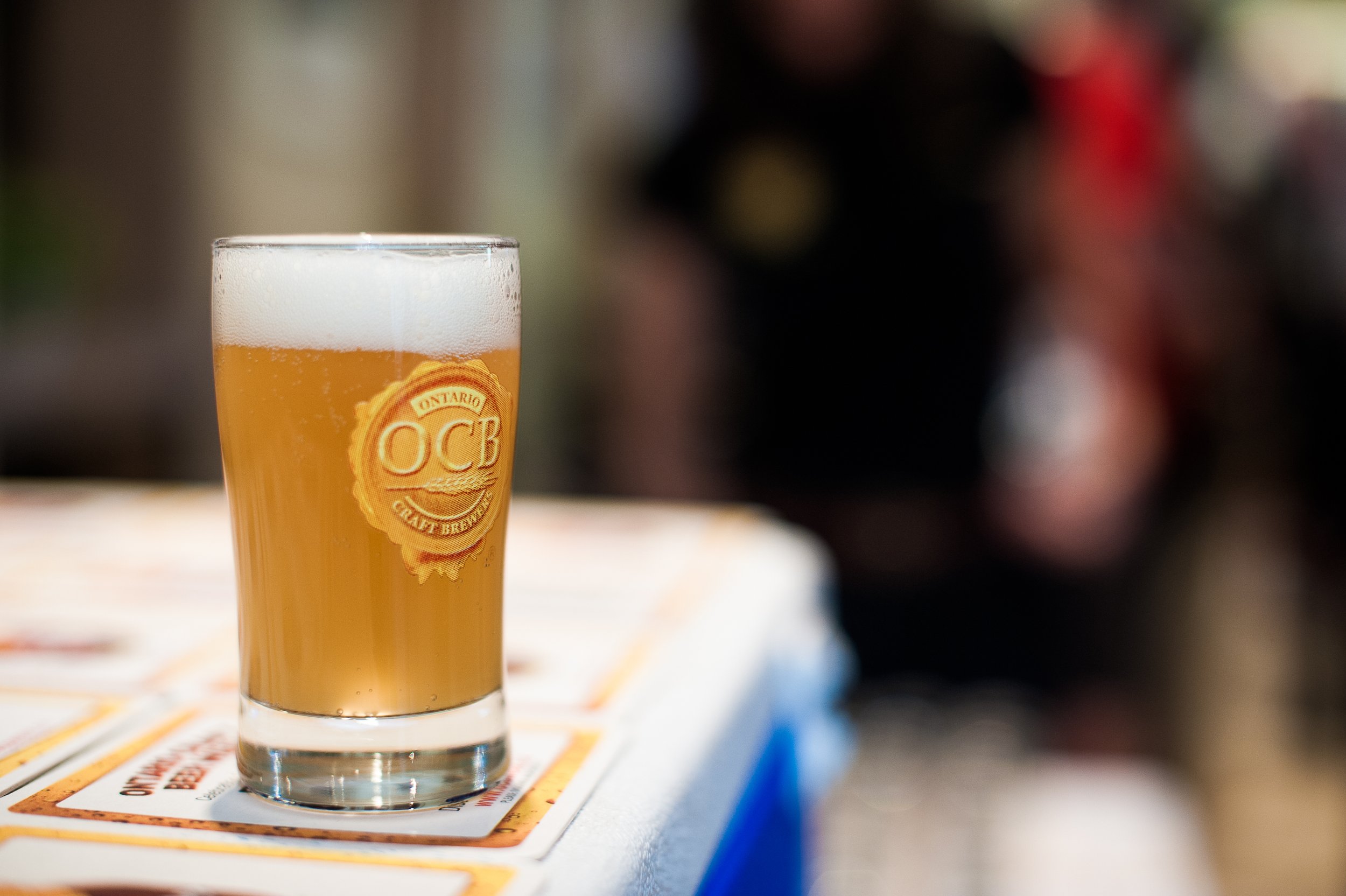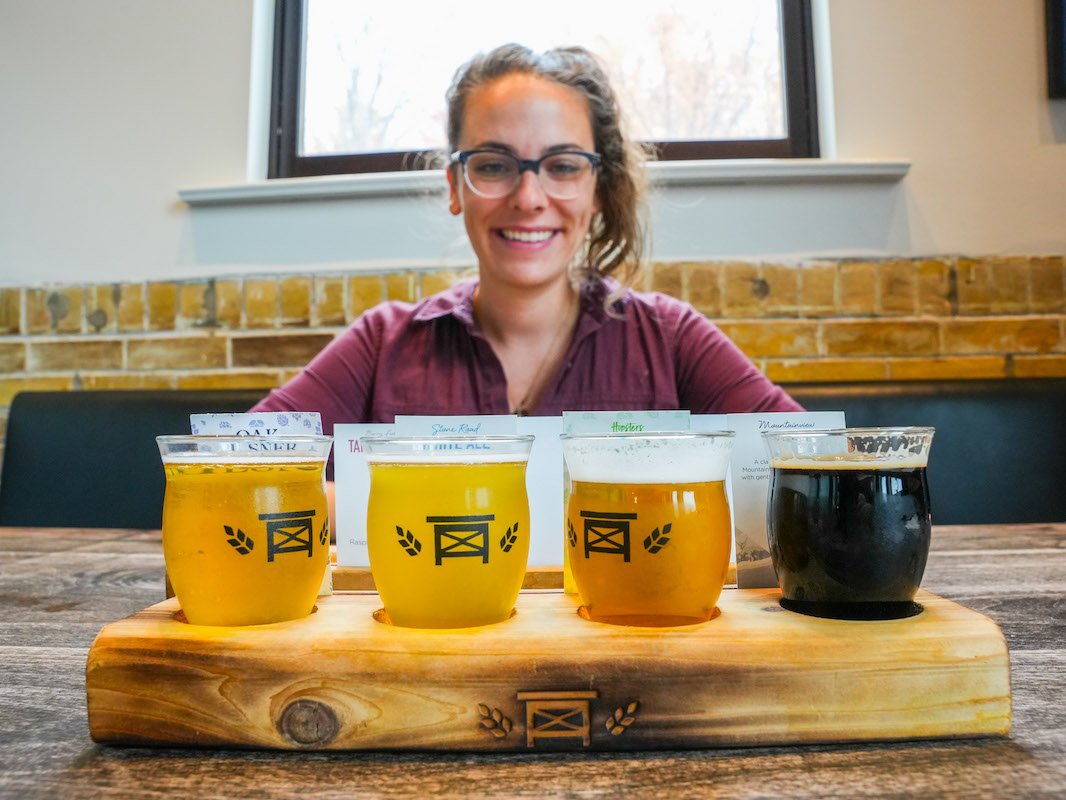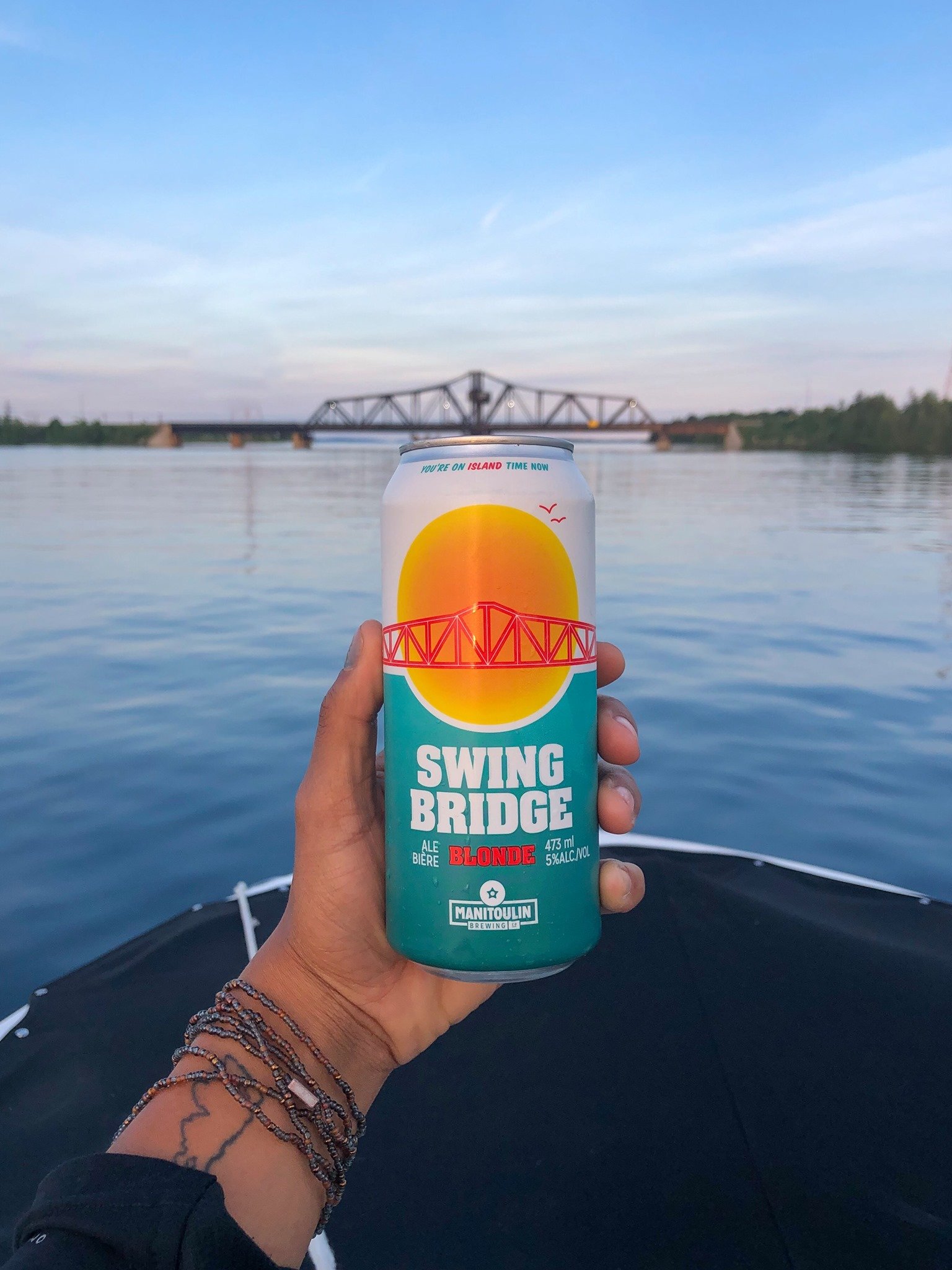
Best Practices for Growing Craft Beer Tourism
A Toolkit for Ontario Craft Brewers
OCTOBER 2022
TOOLKIT OVERVIEW
Why This Toolkit was Developed
This toolkit was developed to help breweries drive tourist visitation to their business and grow food tourism in their communities.
Tourism is recognized as an important source of revenue for craft brewers who benefit from visitors searching for experiences such as tasting tours and purchasing products directly onsite. The industry recognizes that there is potential to grow tourism revenues within the province by attracting tourists to visit craft breweries through new and enhanced visitor experiences.
The Ontario Craft Brewers Association (OCB), as part of its commitment to support strategic projects in alignment with the growth and recovery of the Ontario craft beer sector, engaged the Culinary Tourism Alliance (CTA) to conduct research into best practices in driving tourism to craft breweries across Ontario, and to share these insights with the industry via this toolkit.
Methodology
The CTA used multiple research tools to gain an in-depth understanding of best practices being utilized by Ontario craft brewers to drive tourism. This research was undertaken in September-October 2022, and involved an online industry stakeholders survey (completed by 41 Ontario craft breweries), one-on-one key informant interviews with ten Ontario craft breweries and brewery tour companies, and desk research studying how Ontario craft breweries portray their visitor experiences online.
Who This Toolkit is For
This toolkit is intended to serve as a resource for craft breweries looking to develop or enhance their visitor experiences. This includes:
Established breweries looking to offer new visitor experiences or take existing experiences to the next level
New or recently-established breweries who want to develop visitor experiences and ensure their visitor experience is part of their brand
Tourism and destination professionals seeking to elevate experiences offered by breweries in their communities
CRAFT BEER’S IMPORTANT PLACE IN THE TOURISM INDUSTRY
Craft Beer Tourism as an Economic Generator in Ontario
Recent research by the Canadian Centre for Economic Analysis (CANCEA) on behalf of the Ontario Craft Brewers Association has demonstrated the scale of craft brewery tourism in Ontario today:
More than 5 million people visit Ontario craft breweries annually, and more than 1.8 million of these visitors are tourists (a tourist visit being defined as “an overnight trip or a same-day trip of a distance that is 40km and over“)
Craft brewery tourism generates over $200 million in economic activity in Ontario every year
In Ontario, craft brewery tourists spend 10% more on average than other tourists in general
(“The Significance of Craft Beer to Ontario's Ecosystem”, Canadian Centre for Economic Analysis, 2022)
Craft Beer’s Role in Food Tourism
Craft beer plays an important role in the broader food tourism industry. Food tourism includes the active pursuit of unique and memorable eating and drinking experiences, as well as agritourism experiences that connect what is being grown and produced in an area to what is being prepared and enjoyed by locals. Craft beer tourism is a part of this definition and can be considered a subset of food tourism.
Food tourism can play a significant part in preserving local heritage while building on existing tourism assets and driving innovation. By increasing visitor demand for local food and drink, food tourism contributes to the long-term sustainability of local agriculture, food systems, communities, and culture. Craft beer in particular can be incredibly effective at preserving local heritage and can contribute importantly to the development of a community’s tourism industry.
Craft Breweries in the Food Tourism Value Chain
To understand the impact that craft beer tourism can have on a local economy and the broader ecosystem that craft beer tourism is a part of, it is helpful to look at its place in the Food Tourism Value Chain.
Craft breweries and other beverage producers are important links in the value chain. They fit in alongside other visitor-facing businesses like: Restaurants; Accommodations; Growers, Producers and Suppliers; Attractions; Cooking Schools; Markets; Festivals and Events; Retailers; Tour Operators; Technology and Media. Businesses in each of these categories have the potential to contribute to and benefit from the development of food tourism.
Value chains are designed to increase the competitive advantage of a group of businesses through working in collaboration to deliver a combined value to the customer that is beyond a single operator’s individual capacity. This interdependence allows operators to focus on what they do best while benefiting from the increased efficiency and effectiveness of working as a collective. Visitor experiences are enriched with each layer of value they receive while exploring a destination. Craft breweries can collaborate with other businesses in their community’s Food Tourism Value Chain to deliver multi-sensory high-quality experiences that exceed the expectations of visitors.

BEST PRACTICES FOR GROWING CRAFT BEER TOURISM
The Culinary Tourism Alliance has identified six best practices that Ontario’s craft beer industry should strive for in order to attract visitors and grow craft beer tourism in the province.
1. Incorporate Attracting Visitors into Your Business Plan
The breweries that are effective at attracting visitors and creating visitor experiences have succeeded by incorporating tourism into their overarching business plan - intentionally thinking of their brewery as a destination, and not treating it as an afterthought.
Craft breweries can come to embrace tourism and develop visitor experiences at any stage of their development. For many breweries, visitor experience was a crucial part of their site selection process and their visitor experience developed alongside their brewery. Some breweries have gone further to actively make their visitor experience central to their brand. Other breweries did not plan on developing a visitor experience, but came to it unexpectedly, for example in response to the pandemic.
There are many advantages to making the tourism market a pillar of your business plan:
It allows you to introduce visitors to your beer with a view of making them long-term customers
It helps to focus your marketing efforts on attracting high yield customers (consumers looking to support local businesses)
It creates opportunities for partnerships with other businesses in your community within the food tourism value chain
It allows you to diversify your revenue streams such as hosting special events and weddings that generate venue rental income
It makes your business more resilient and able to manage economic shocks
It allows you to generate revenue beyond your brewery’s production
capacity
It helps you ensure that your staff understands the value of the visitor
experience to your business
Recommendations:
Make offering a visitor attraction a pillar of your business plan.
Identify the target market or marketing personas that you want to attract for
your experience.
Make the importance of visitor experience clear to your team members and part of your onboarding process
Resources:
To learn more about traveler types and determine what your target market is looking for, read Destination Canada’s Explorer Quotient Toolkit
To learn more about consumers traveling to Ontario, access research and data from Destination Ontario
“The tourism aspect was an obvious fit from the beginning and it’s something that we continue to leverage more and more. We strive to diversify so that we’re able to with other local businesses and in Manitoulin Island with the goal of everyone benefiting in the long run.”
2. Go Beyond Tastings: Make Your Brewery Experience Multisensory
Tourism experiences are consumable activities that you offer to your visitors. They can establish a personal connection between you and your visitors, provide an opportunity to promote your unique selling proposition, and provide opportunities for learning and better appreciation of your product and experience. Ideally, an experience is time-bound (set days and or times that you offer the experience), purchasable (you are charging a fee for it) and bookable (can be booked in advance online).
Craft beer tourism is well positioned for multisensory experiences, since the act of drinking usually involves smell, sight, touch, and taste. By actively focusing on sensory components you can ensure that you provide your visitors with a more immersive, enriching experience. Multisensory experiences are more memorable to visitors and provide them with a greater awareness of their surroundings. Through multisensory engagement, you can also offer your visitors greater value, ensuring that they are getting an experience that they would not be able to find anywhere else.
The follow are the key elements that make up a multisensory experience:
Immersive: It brings a visitor directly into a process of harvesting or producing something that goes into a finished product. Or, it could be a brief immersion into a cultural practice that’s meaningfully connected to the food or drink being served.
Active: It includes hands-on activities that allow visitors to observe and interact with what’s happening around them.
Meaningful: It facilitates a sense of connection through feelings, thoughts, learnings, and emotions, ensuring the creation of memories that a guest keeps and shares with their networks later on.
Engaging: A great experience captures a visitor’s attention and retains it. This facilitates positive memories from taking in the enjoyable, valuable content related to the product.
Recommendations:
Define your unique selling proposition and learning opportunities that you believe your visitors should take away from the experience
Identify the sensory components that you can leverage to make your experience more immersive and enriching
Consider making your experience purchasable and bookable when you have established the capacity
Resources:
To learn more about multisensory experience development, complete the Multisensory Experience Development Webinar from the Tourism Industry Association of Canada (TIAC) created in partnership with the Culinary Tourism Alliance (CTA)
“Your #1 marketing asset is the customer experience at your brewery. If you provide an excellent experience, consumers leave as brand loyalists and their word-of-mouth advertising becomes very powerful. You can’t just stand on your beer; it’s not enough.”
3. Collaborate and Support Your Community
Craft breweries that are successful at attracting visitors understand that they play a role in building awareness of their destination rather than just their business. Your visitor experience should add to your region’s overall visitor appeal, help visitors connect to the region in a more meaningful way, and encourage return visits and referrals to your business.
Collaboration can be effective at enhancing your own visitor experience, for example through pop-up events with local chefs or restaurateurs, featuring products made by local artisans or craftspersons, or using local suppliers whose products also tell a story about your region. Beyond your own experience, collaboration is crucial to helping your community develop a robust visitor experience in general. The Food Tourism Value Chain illustrates the range of businesses that you could work with. As businesses in the value chain, you share a mutual interest in creating a more attractive destination.
Communities also have tourism-focused organizations who craft breweries can work with to attract visitors and create a more robust destination. In Ontario, this includes: RTOs (Regional Tourism Organizations), DMOs (Destination Marketing/Management Organizations) , Municipal Economic Development Departments, Chamber of Commerces/Boards of Trade and sector organizations such as the OCB and CTA. These organizations can help breweries align with local, regional or provincial tourism strategies, participate in marketing activities or wayfinding initiatives, pinpoint target markets, make connections with like-minded businesses, and identify funding opportunities.
Support for your destination can also extend to supporting your community in general. Many breweries have embraced their roles as natural community hubs to provide spaces for arts and culture activities, or events by community support or advocacy organizations. Not only do these activities contribute to the health of the community, they can contribute to the vitality of the visitor experience.
Recommendations:
Build a strong relationship with your community’s DMO
Build strong relationships with other businesses in your community’s Food
Tourism Value Chain and identify opportunities for collaboration
Find opportunities to support your community
Resources:
Map your own community’s Food Tourism Value Chain and identifying potential collaborators using “Worksheet 1: The Food Tourism Value Chain” at the end of this document
Identify and make contact with your community’s the Regional Tourism Organization to learn more about resources available in your area
“Work with your local tourism board, with other local businesses, and with their own followers. when everyone is sharing and collaborating.”
4. Tell Your Story and Connect it to Place (Location)
As a craft brewer, you already understand the importance of marketing your product across various platforms, channels, and content types, including traditional and social media. One key element that can help tie your marketing initiatives together is understanding the role of storytelling in food and beverage tourism.
Visitors today are looking for deeper connections with the places they visit such as the local cultures, peoples, and landscapes that make destinations unique. Storytelling is one way to provide that deeper connection and allow visitors to feel like they know a place.
The 4 Ps of Storytelling
Plot: Every good story brings the receiver on a journey and is made up of a beginning, middle, and end. When crafting your story, think about how you can take your visitors on a journey. This will often be the story of how a product is made, or it could be the history of your community, family, or property.
Purpose: Be precise about what your story should mean to your visitors, and how your story connects to your product and the visitor experience. Stories are the thread that you use to tie all the elements of the experience together.
People: Your story should be relatable. It should easily connect with facets of someone’s life. Your people - whether it’s you, your staff, your partners, your suppliers - make up a community. Weaving their stories into your own makes your story more robust and personal. It is also your most powerful tool for making a personal connection with your visitors.
Place: Place is uniquely important in the world of tourism. This is where a tourist’s experience happens. Consider what is unique about your location and how it relates to the history and culture of your community.
Where and When to Tell Your Story
Storytelling can take many different forms and occur in many different places. The more storytelling touch points you have, the more likely that it will be remembered by your visitors. For example, storytelling can take place through your brand, your staff, on your decor, menu, or product labels, or online through your website and social media channels.
Online Storytelling vs. Onsite Storytelling
Online storytelling is important for getting people to come to your experience. It takes place on digital channels like your website, social media channels, and external platforms like review services or partner websites.
Onsite storytelling is an actual part of the experience that you provide to visitors. It is important for creating a bond between your visitors and your experience or product. Your online storytelling should help convey what people will be able to experience onsite.
Recommendations:
Determine the aspects of your story and your community’s story that you want to share with your visitors
Identify opportunities to incorporate your story into the visitor experience
Resources:
“Worksheet 2: Crafting Your Story” at the end of this document
“We love being a part of telling stories. If you want to get a sense of what Sarnia is or who the people are, you come to the brewery. It’s all made right here in our buildings. We love to talk about the fresh water from the Great Lakes. We love to talk about the farmers whose ingredients we use from across Ontario.”
5. Manage Your Reputation Online and Onsite
Reputation management is essential to the success of any business offering a visitor experience, but is something that can often be overlooked or treated as an afterthought. Managing your reputation is done both onsite and online. Capturing feedback about your products and visitor experience is essential to managing both.
Online Reputation Management
Whether it is a tourist planning a trip to a destination, or someone in the community looking to visit a local business, reading online reviews is almost universal. Some research has shown that more than 93% of tourists will read reviews when planning to visit a destination and 98% read online reviews of local businesses.
Reviews have become more influential than ever in consumer decisions, and consumers are willing to pay more for a service from a company with higher reviews and ratings. While consumers are sensitive to reviews, they are also appreciative of responsiveness. Research also shows that consumers are likely to use a business that responds to its online reviews, and they are likely to leave their own reviews if their negative experience were turned into a positive one. Visitors to your brewery expect to see positive reviews and expect responsiveness to your reviews.
Consider the following questions:
Do you have ownership of your business’s profiles on Google and TripAdvisor?
How are you encouraging and collecting visitor feedback onsite and online?
How often will both onsite and online feedback be reviewed and addressed?
Who will monitor your website and social media accounts for visitor reviews of
the experience?
Are they equipped to respond to online reviews, and to address any visitor
complaints or negative feedback?
How quickly are you responding to online reviews or customer inquiries?
Onsite reputation management
Reputation management onsite begins with how welcoming and accommodating you are to all types of visitors. A great example of this are breweries (over 3 dozen across Ontario) who have taken steps to be welcoming to the cycling community and work with organizations such as Ontario By Bike to be recognized as “bike friendly”. Another example are breweries who offer service in both official languages and promote this by participating in SÉO’s Route Champlain (there are 3 craft breweries on the trail).
When thinking about the target market you are focused on attracting, consider what other amenities or services would appeal to them and make them more likely to include your brewery on a stop during their travels. Several breweries in the province have EV charging stations as an example of an innovative way to attract the “high value and high values” consumer.
Recommendations:
Take ownership of your business profile on Google and TripAdvisor
Make asking visitors for feedback a part of your visitor experience
Implement a process to ensure your online reviews are monitored and
addressed
Consider the types of services you can offers and the programs you could
participate in that highlight your onsite experience
Resources:
Claim and regularly review and update your TripAdvisor and Google listings
“When we opened, we did not realize the breadth and depth of the different communities within our town. One of which was the cycling community [and] we didn’t realize how organized and lively this community is. So, we put out a repair stand and bike racks, and we held events geared towards cyclists and they were the first group to convene in our place and embraced us right away.”
6. Verify Your Values Through Certifications
Now more than ever, consumers are looking to support and spend their money at businesses that reflect their values. This extends to the visitor economy where tourists are keen to make supporting their values a part of their visitor experience. Businesses face a challenge when it comes to this, as tourists can be skeptical and demand transparency and accountability for what they purchase and support.
Businesses can overcome this challenge by verifying their values through certifications and promoting this online and onsite. In addition to verifying your values, these certifications and accreditations can provide you with useful resources to incorporate your values into your business, and help you demonstrate the steps you are taking to your visitors.
Programs to Work With
GreenStep is a national program that certifies tourism destinations and businesses taking steps to improve their sustainability performance. This certification is approved by the Global Sustainable Tourism Council (GSTC).
Rainbow Registered is a national program delivered by the Canadian Gay & Lesbian Chamber of Commerce (CGLCC). It certifies that a business or organization meets a stringent set of standards to ensure LGBT+ customers feel safe, welcomed, and accepted.
Feast On® is a provincial program delivered by the Culinary Tourism Alliance (CTA). It certifies that a restaurant, experience or purveyor is supporting Ontario's farmers and makers, and using locally grown and raised ingredients. This includes operators serving Ontario craft beer on their menus!
Ontario Living Wage Network certifies that a business is paying a living wage to its employees.
Recommendations:
Identify areas related to your core values where your business could benefit from additional resources and guidance
Pinpoint the core values that you want to share with your visitors
Achieve recognition by those certifying bodies whose programs are aligned
with your values
Resources:
Beyond verification/certification/accreditation programs, there are many other organizations and resources available to make your visitor experience more inclusive and accessible:
Tourism Industry Association of Ontario: Accessible Tourism Resources
Access Now: Discover Accessible Places
Tourism Industry Association of Ontario: Building Inclusive Tourism Resources
Canadian Centre for Diversity and Inclusion: Toolkits
BEST PRACTICE CHECKLIST
Incorporate attracting visitors into your business plan
Make offering a visitor attraction a pillar of your business plan
Identify the target market that you want to attract
Make the importance of visitor experience clear to your team members and part of your onboarding process
Go beyond tastings: Make your brewery experience multisensory
Decide on the unique selling proposition and learning opportunities that you believe your visitors should take away from the experience
Identify the sensory components that you can leverage to make your experience more immersive and enriching
Consider making your experience purchasable and bookable when you have established the capacity
Collaborate and support your community
Build a strong relationship with your community’s DMO
Build strong relationships with other businesses in your community’s Food Tourism Value Chain and identify opportunities for collaboration
Find opportunities to support your community
Tell your story and connect it to place (location)
Determine the aspects of your story and your community’s story that you want to share with your visitors
Identify opportunities to incorporate your story into your visitor experience
Manage your reputation online and onsite
Take ownership of your business profile on Google and TripAdvisor Make asking visitors for feedback a part of your visitor experience
Put processes in place to ensure your online reviews are checked and addressed
Consider the types of services you can offers and the programs you could participate in that highlight your onsite experience
Verify your values through certifications
Identify areas related to your core values where your business could benefit from additional resources and guidance
Pinpoint the core values that you want to share with your visitors Aspire to, and achieve recognition by those certifying bodies whose programs are aligned with your values









